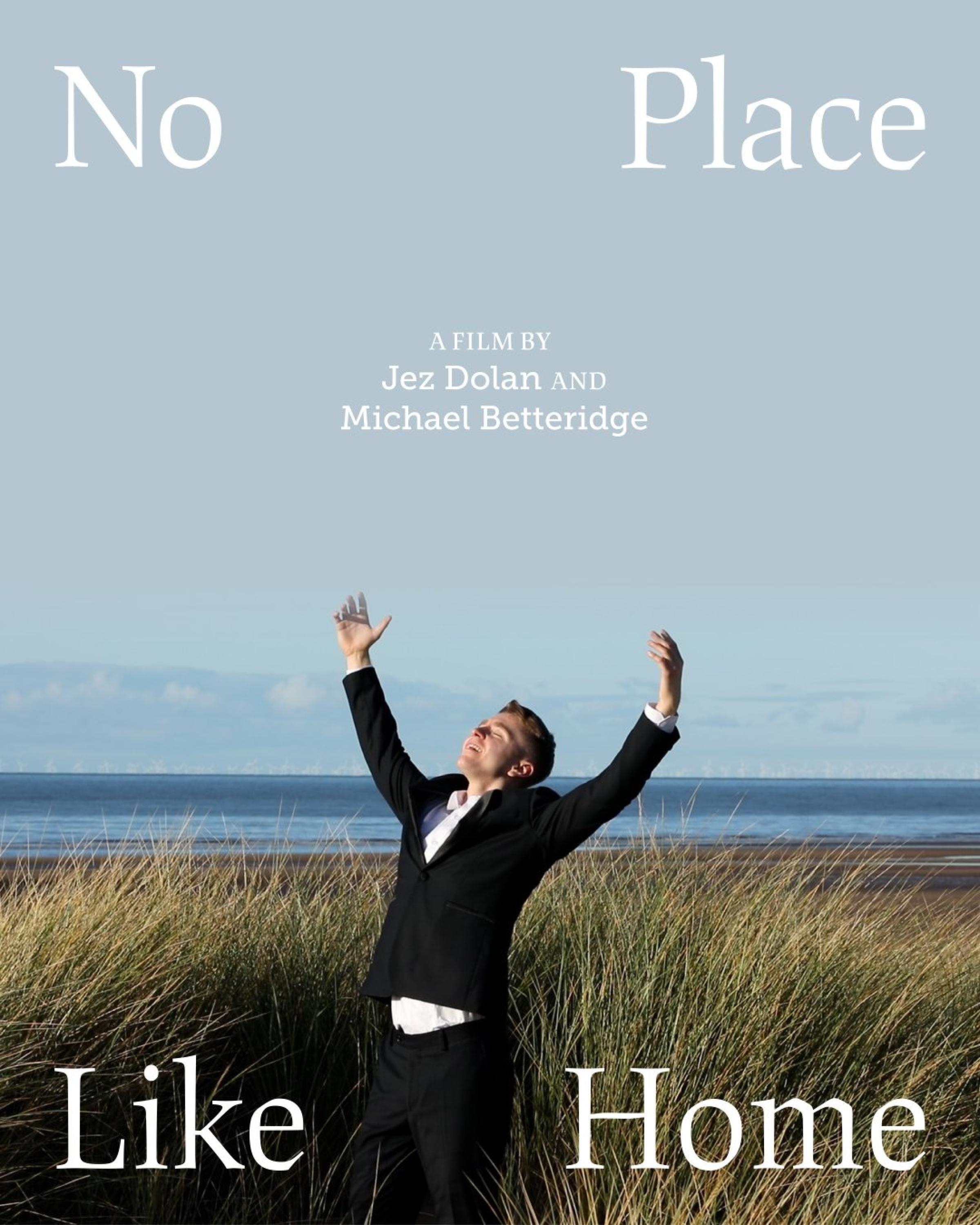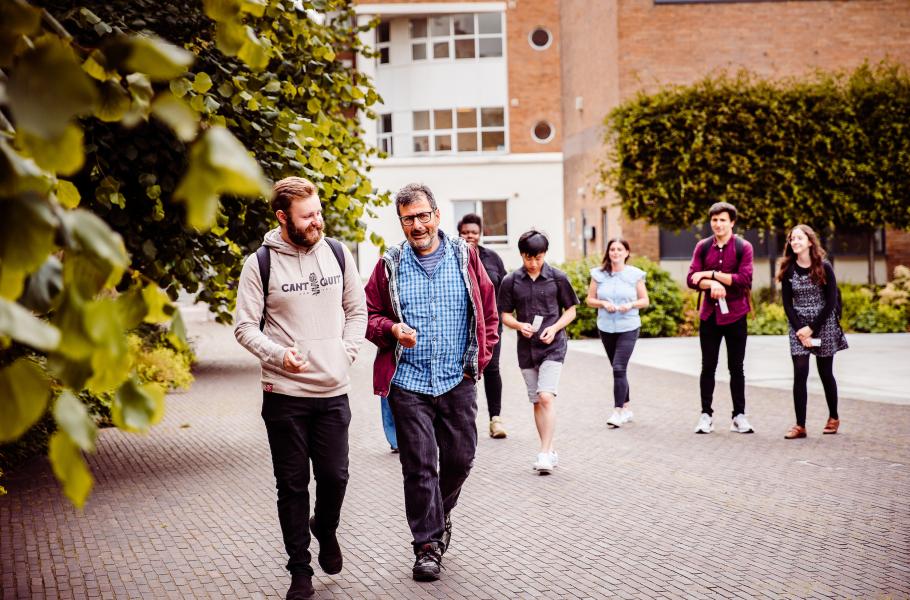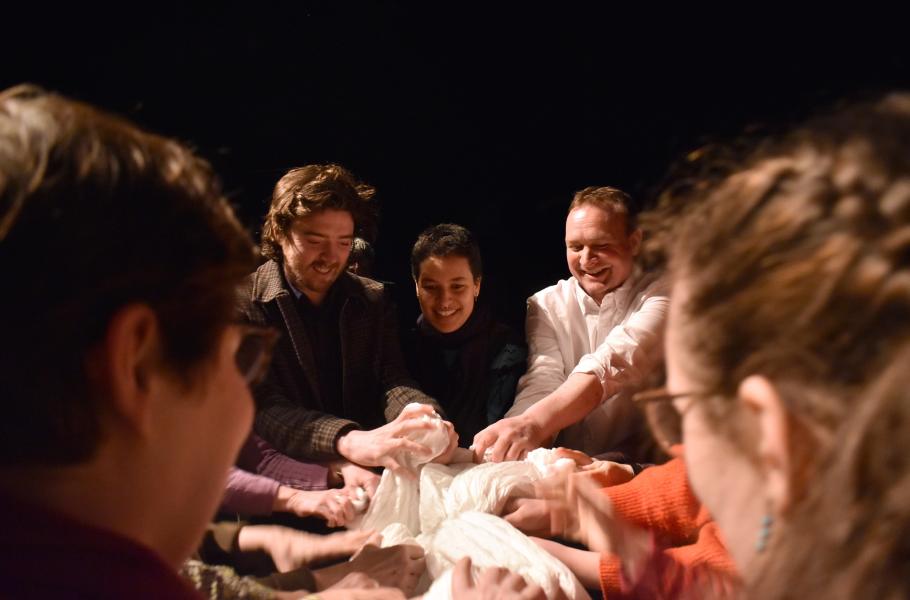Archives, Identity and Belonging: Jez Dolan on Queer Storytelling
Multidisciplinary artist Jez Dolan joins Fine Art MA student Hannah Chaa to discuss his practice in the context of the current Peter Scott Gallery Manton Room display, Queering the Collection (open Monday - Friday until 16 May 2025). The display introduces works newly acquired by the gallery that fuse the personal and political.
Known for weaving together queer history, storytelling and activism, Jez’s work thrives in the liminal spaces between the seen and unseen. Throughout our interview we talk about his years of working with Polari- the coded language of secrecy and subversion- and explore queer timelines spanning the past and present through Jez’s work with archival material. Linking to Lancaster Arts 2025 annual theme of Land, we also consider the role of landscapes and sacred spaces in some of Jez’s work.
Hannah Chaa: Your work engages deeply with archives and historical materials. What role would you say archives play in shaping queer identities?
Jez Dolan: My starting point working with archives was the work I was doing with Polari which started in 2010, looking at Polari’s linguistic roots. I started looking into the Hall-Carpenter archives at LSE which is a national LGBT social history archive, and I discovered that the archive held very little material referencing Polari. This led me to the understanding that Polari was very much a spoken rather than a written thing.
HC: When you work with archival materials, how do you balance historical accuracy with creative reinterpretation?
JD: I’ve used archival works in different ways and instances. The Polari etymology comes from Alfred H. Barr from the 1936 show at MOMA about abstract art and when I saw that diagram 15 years ago, I fell in love with it. As I was working on the Polari project, it felt like a great representation of how Polari emerges and exists, so I adapted it to this new purpose.

Another example of drawing on archive material was my work with the George Cecil Ives archive. George C. Ives had founded the Order of Chaeronea which was the first modern homosexual secret society, of which Oscar Wilde was undoubtedly a member. I went to Texas in 2015 to look at the Ives archives and made a series of drawings from the diaries that he’d kept for 69 years. I was merging all of these things, bringing and fitting it together into a different whole. I found my own rhythm that fits comfortably with what I do and how I do it. It has the potential to fluctuate and change slightly from one project to another.
HC: Throughout past projects such as “No Place Like Home”, you explore themes of queer displacement and belonging. When working on this project, what were the visual representations that you felt were important to be a part of this film?

JD: Throughout December 2021 to April 2022, I was an artist resident for the Manchester Art Gallery for the Derek Jarman Protest! Exhibition. Derek Jarman has always been a big hero of mine for his activism, queerness and openness. One of his first Super 8 films called ‘A Journey to Avebury’, was set in Wiltshire which has the biggest stone circle in Europe. While looking closely at his work, I made some performances and works that followed the idea of the magic of space and time- long time and deep time. The sequence with the stones in our film was filmed in Arbor Low in Derbyshire. It’s a stone circle and a space where people have been meeting up for spiritual, magical and devotional practice for the last five and a half thousand years. The earlier shots of outdoor spaces were filmed in my local park which was significant to me.
HC: Does landscape - whether physical, cultural or emotional, play a role in defining what ‘home’ means for queer individuals?
JD: Part of the starting point of the “No Place Like Home” project was about how many people presume that the majority of queer people leave home to move to the city, where the fun is, and that’s not necessarily always the case. I wanted to explore the idea that there’s this other thing that we’re connected to that isn’t about any of that. As artists, we have to put ourselves in ‘not knowing’ often. If we knew what we were doing, why would we do it? And that goes with magic, landscape, history and time - that question of why do we, and why should we, feel a connection with interacting with these landscapes? There’s historical evidence that can tell you that people were there in Avebury - and whether they were female or male - through the bones in the burial grounds. But there’s no evidence to see if they were queer, even if some undoubtedly were. It’s that thing about having the sense of mystery as a good thing.
HC: As you work within collaborative projects, how does working with others shape the meaning of your work?
JD: Being collaborative is really exciting. It allows me to go, ‘you bring this in and I’ll bring that stuff in’. I hope I’m open as a collaborator in allowing people to incorporate what they truly believe in. I think collaboration is really important to me and it’s about joyfulness and bringing something together that I couldn’t do on my own.
HC: Looking forward, what themes or ideas are you eager to explore in your future work?
JD: I run a company called IAP:MCR with my husband (David Dolan Martin) and Joshua Val Martin. We’re currently undertaking a project called PROTEST! Which has a focus on the fight against Section 28 and its contextual social climate. This will be a year and a half long project of oral history, training, gathering, archiving and accessing archives, making new films, gallery exhibitions and events programming. It has just started in the last couple of months and is running for the next 18 months. It’s very much about queer stories and queer storytelling and making work about artists who identify as queer.
For further insight into Jez’s work, the Peter Scott Gallery invites you to a workshop session, led by Jez and Professor Paul Baker, on Tuesday 13 May 6-8pm to talk about queer identity translated into artistic expression. Participants will have the opportunity to learn Polari words and phrases to incorporate into personalised prints to take home.
To book a spot: https://www.lancasterarts.org/youre-invited/whats-on/queering-the-collection-discover-polari-with-jez-dolan-and-paul-baker
To look at more of his work: https://www.jezdolan.com/ and some of his past and current projects: https://www.iapmcr.co.uk/
Posted on 24th Apr, 2025






